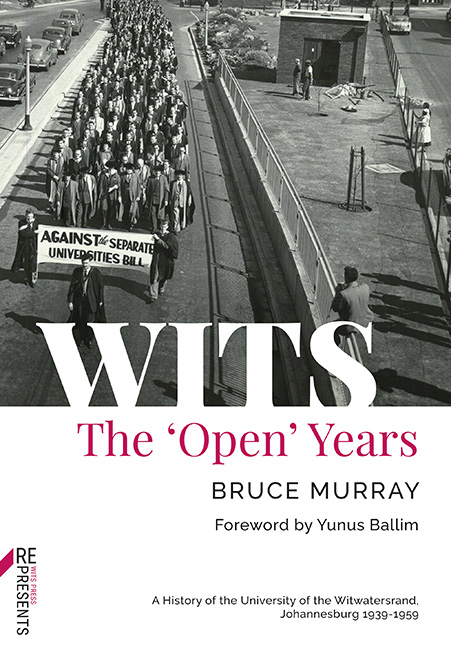10 - End of an Era
Published online by Cambridge University Press: 24 November 2023
Summary
An era ended at Wits with the passage of the separate university legislation in 1959. This was symbolised on 17 April 1961 when Richard Feetham, as Chancellor, unveiled a plaque at the entrance to the Great Hall to record, in both English and Afrikaans, the Affirmation and Dedication pledged by the University two years previously:
We affirm in the name of the University of the Witwatersrand that it is our duty to uphold the principle that a university is a place where men and women, without regard to race and colour, are welcome to join in the acquisition and advancement of knowledge; and to continue faithfully to defend the ideal against all those who have sought by legislative enactment to curtail the autonomy of the University. Now, therefore, we dedicate ourselves to the maintenance of this ideal and to the restoration of the autonomy of our University.
The practical manifestations of the end of the ‘open university’ era were by then already evident, with African enrolments, in particular, plummeting.
The wider impact on the University of the separate university legislation cannot be assessed in isolation. Recent scholars see the years 1959-1961 as a watershed in the making of apartheid; it was then that apartheid moved into its ‘second phase’ in response to the escalation of urban African resistance in the late 1950s, culminating in the Sharpeville shootings of March 1960. The government resorted to massive repression, beginning with the banning of the African National Congress and Pan Africanist Congress, a general tightening of state controls, more rigid influx control, and the active promotion of the homelands policy of separate development in the effort to undercut African nationalism by asserting tribal identities – a policy already inherent in the plans for separate university institutions. It was in this new atmosphere of repression, restriction, control and unrest that Wits entered the 1960s; it was an atmosphere fraught with consequence for Wits and the ‘liberal’ universities in general.
‘NON-WHITE’ ENROLMENTS
Once enacted, the 1959 legislation was complied with by Wits. Whereas the University of Natal, Durban, earned the wrath of the government by exploiting a ‘loophole’ in the initial regulations governing ‘non-white’ access to the ‘white’ universities to continue to admit certain categories of ‘non-white’ students without ministerial consent, Wits was meticulous in following government guidelines.
- Type
- Chapter
- Information
- WITSThe 'Open' Years, pp. 322 - 326Publisher: Wits University PressPrint publication year: 2022

